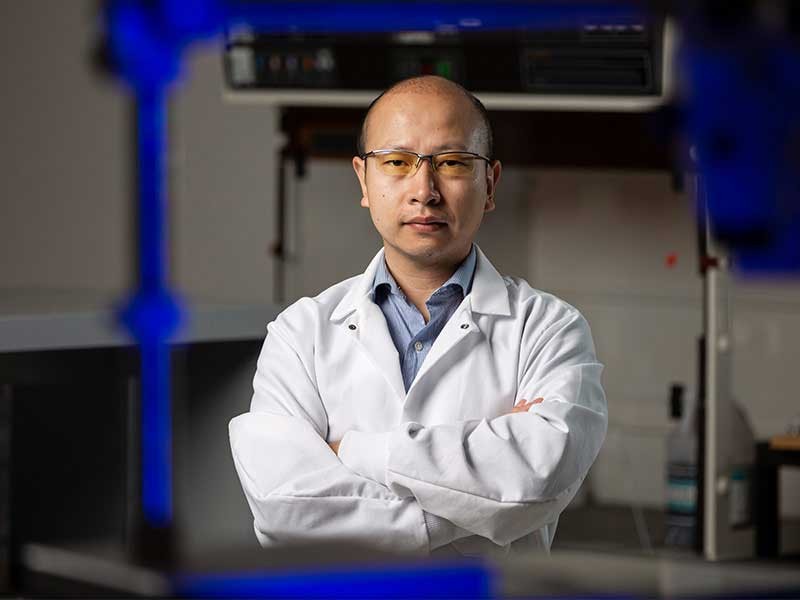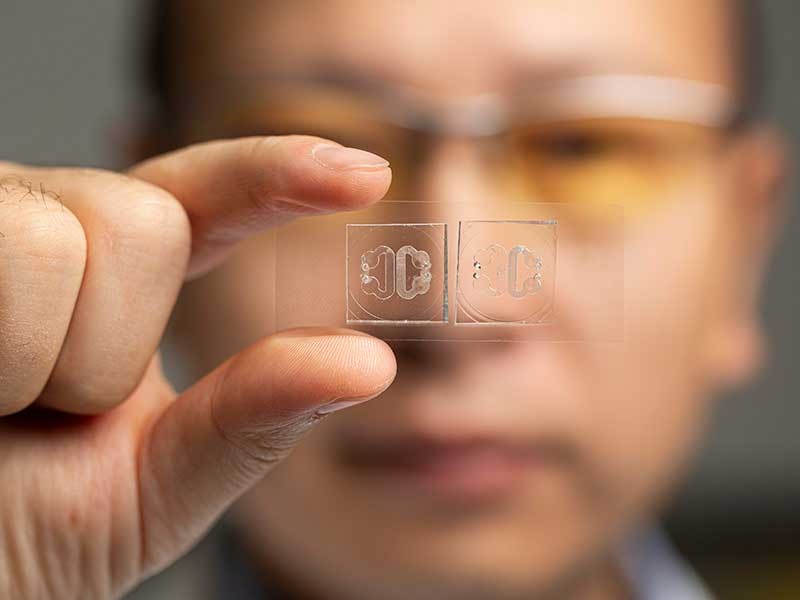Linking Cellular Activity to Brain Tumors
By Matt Jensen |
Biological engineering faculty Yu Huang is leading an innovative study to better understand the link between blebbing and brain tumors.
A team of researchers at Utah State University is tackling one of the newest questions in cancer research: Is cellular blebbing associated with the development of tumors?Blebbing is the formation of a balloon-like protrusion that emerges from a cell membrane. For years, blebbing was associated with cell death. However, recently, it has been observed during other normal cellular processes, including migration, proliferation, immune response and cell-to-cell communication. New evidence indicates Blebbing may also trigger the proliferation of cancer cells.
“We are looking at the unique connection between blebbing and cancer invasion,” said Yu Huang, an assistant professor of biological engineering at USU. “Particularly, we’ll study the relationships between blebbing and glioblastoma, an aggressive cancer that forms in the brain.”
In May, Huang received a $435,000 grant from the National Institutes of Health to further define the connection between blebbing and glioblastoma. The study will also help researchers understand how blebbing triggers a range of normal cell functions.
“The fact that one simple behavior can start a chain-reaction that leads to so many different cell events is fascinating,” said Huang. “More emergent studies, including ours, indicate that there may be a sophisticated mechanism cells use to initiate blebbing to trigger those various cellular events. We want to understand how.”
Huang will lead the study in collaboration with USU mechanical engineering faculty Tadd Truscott and USU mathematician Jia Zhao. Truscott will analyze imaging data and derive digital information that quantitatively characterizes cell invasion and blebbing activity. Zhao will use this digitized data to build a mathematical model to clarify the blebbing phenomenon.
Key to the study is a specially designed chip developed in Huang’s lab. The tiny device simulates the environment in which glioblastoma proliferates.
“We’re using a micro-engineered device that mimics the in-body environment of an invasive tumor in brain tissue,” said Huang. “This setup allows us to fully monitor the entire process of tumor cell invasion and the fine detail of plasma blebbing.”
Huang’s research has broad implications. The findings may help advance the diagnosis and treatment of many diseases, including other forms of cancer, autoimmune disorders, aging and neurodegenerative diseases such as Alzheimer’s and Parkinson’s disease.
A tiny chip simulates the conditions in which cancer cells proliferate.
WRITER
Matt Jensen
Public Relations and Marketing Director
College of Engineering
435-797-8170
matthew.jensen@usu.edu
CONTACT
Yu Huang
Associate Professor
Biological Engineering
435-797-5379
yu.huang@usu.edu
TOPICS
Research 897stories Engineering 346stories Health 314stories Biology 170stories Innovation 92storiesComments and questions regarding this article may be directed to the contact person listed on this page.








